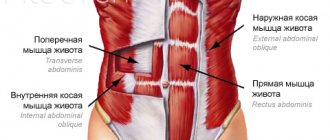Composition of honey
Honey contains a lot of useful substances, such as carotene, protein, ascorbic acid, B vitamins, vitamin PP, essential oils, enzymes, sugars, organic acids, nitrogenous compounds. In total, honey contains about 300 different substances, of which 33 are useful microelements. Thus, the nutritional value (not calorie content) of honey is 82 g of carbohydrates per 100 g of product.
Honey contains large amounts of fructose (about 40%) and glucose (about 35%). Moreover, if the fructose content increases, honey becomes sweeter and the calorie content of honey increases, and with an increase in the amount of glucose, honey undergoes crystallization. Honey also contains water (15-22%).
Organic acids such as malic, lactic, citric, etc. give honey a unique taste. In addition, honey contains about 20 amino acids and various enzymes (invertase, lipase, diastase, etc.).
Why is fructose important?
500 years ago, before the era of mass sugar production, there was minimal fructose in the human diet. It came only as part of regular food. Fruits, vegetables, grains, nuts/seeds and proteins contain limited amounts of fructose and provided moderate amounts. When the food industry isolated fructose from sources such as corn, and when it was added to a variety of processed foods, our consumption of fructose increased.
It especially increased between 1970 and 2000. Although many people associate fructose with fruits, most of it comes from non-fruit sources. A survey conducted in the 1990s found that the average person consumed ~80 grams of added sugar (equivalent to ~320 calories or 15% of energy intake); about half of this amount is fructose.
We get fructose not only from fruits, but also from sucrose (tablet sugar). Sucrose is a diasaccharide (two sugars) consisting of fructose glucose. It is found in processed foods, including sweets, soft drinks, and virtually any packaged “edible food substance.”
How many calories are in honey?
On average, the calorie content of honey is approximately 327 kcal per 100 g of product. Thus, the calorie content of honey can be compared with condensed milk, wheat bread, beluga, veal liver, and lamb.
How many calories are in honey also depends on its type. Thus, in linden varieties of honey the calorie content is no more than 380 kcal, and in dark and tart varieties – 390-420 kcal.
Despite the high calorie content of honey, it is still considered more of a dietary product, since calories can be attributed not to sugar, but to the glucose contained in honey.
How many calories are there in a tablespoon and a teaspoon of honey? The calorie content of a tablespoon of honey is approximately 56 kcal (17 g), and the calorie content of a teaspoon of honey is 26 kcal (8 g of product).
Glucose
Grape sugar (glucose) has another name - dextrose; it is the most important sugar, as it supplies cells with energy during metabolic processes. The substance is present in almost all internal organs and human blood. The sugar concentration on an empty stomach should remain within 100 mg per 100 ml of blood; during the day it can fluctuate from 70 to 120 mg.
A high fasting blood glucose level becomes the main symptom of diabetes mellitus, while a too low one indicates hypoglycemia. The hormone insulin, which is secreted by the islet cells of the pancreas, is called upon to control blood sugar levels.
Excess glucose is converted into glycogen and accumulates in the liver; additional reserves of glycogen are located in the heart and muscle tissue. When there is a lack of energy, it is released into the bloodstream.
Free forms of the substance are present in both honey and fruits; if glucose is a component of sucrose, it:
- is in a chemical connection with fruit sugar;
- must be separated from fructose.
The main advantage is the ability to penetrate the walls of the stomach, without the need for preliminary digestion. The absorption of glucose occurs in a rather complex chemical process, carbon atoms are replaced by oxygen. In this case, carbon is oxidized, transformed into carbon dioxide, and the energy necessary for life processes is released.
Glucose, compared to fructose, is poorly tolerated by patients with diabetes, increases glycemic levels, and is not recommended for impaired carbohydrate metabolism.
Useful properties of honey
Due to the high content of useful substances in honey, it has a lot of medicinal properties. Thus, honey helps normalize the activity of the gastrointestinal tract, is useful for dysbiosis, regulates intestinal motility, awakens appetite, calms the nerves, normalizes sleep, and is an excellent preventive measure for sclerosis.
Honey also has bactericidal and anti-inflammatory properties, accelerates tissue healing, improves immunity, and has analgesic properties.
Despite the high calorie content of honey, it is useful to use it for diseases of internal organs, anemia, and nervous disorders, since its digestibility is 100%. Therefore, honey is always recommended for people in the postoperative period, children with poor health and the elderly.
Doctors recommend eating about 100 g of honey per day for adults and 50 g for children.
What you need to know
Our liver is the main site of fructose metabolism. In the liver, it is processed into glucose derivatives and stored in the form of hepatic glycogen. At one time, the liver can process and store a limited amount of fructose in the form of glycogen. The rest will be stored as fat, so a large single dose of fructose will likely end up on your sides. This is more pronounced in people with high blood lipids, insulin resistance, or type 2 diabetes.
A high intake of fructose (as opposed to other dietary carbohydrates) can cause leptin to not be produced in normal amounts.
Leptin is a hormone involved in the long-term regulation of energy balance. Its level goes up when we get enough calories/energy and goes down when we don't, so it lets us know when to start and stop eating.
Decreased leptin production associated with chronic high fructose intake may have a detrimental effect on food intake regulation as well as body fat percentage. In other words, if you have too much fructose, your brain won't send you the "I've had enough" signals, and you'll continue to eat even though you've already taken in more than enough calories.
Because fructose is retained in the liver, it does not cause a strong glycemic response. And while this may be fine when consuming whole fruit, if you eat added fructose-based sweeteners, the effect is reversed. Although fructose is quite low on the glycemic scale and can help restore liver glycogen during physical activity, excess consumption can lead to the formation of fat in the liver, as well as disruption of energy balance and the body's fat regulation system.
Clinical studies show that people who eat plenty of fruits (and vegetables) tend to be leaner, have an easier time maintaining a healthy weight and overall well-being than those who don't.
Additionally
Worried about fruit? Relax. The experts concluded: "Fructose intake from natural, unprocessed food sources is quite low and is unlikely to have negative metabolic consequences."
Eating fruits (and vegetables) can help prevent chronic diseases and even cancer.
Dr. Vioke, the author of a study in which he tracked the effects of fruit consumption on adults for more than 10 years, says there is no need to worry about weight gain from eating fruit: “There is no evidence to suggest any significant weight gain from eating fruit.” eating a lot of fruit."
If you're concerned about your health and optimal physique, go ahead and eat an orange, but think twice before drinking a bottle of orange juice, or worse, a can of orange soda.
How to lose weight with honey?
Despite the high calorie content of honey (it is higher in calories than sugar), it contains such a large amount of amino acids, vitamins and minerals that, taken together, they effectively help fight excess weight. You could even say that honey is the only healthy sweet for those losing weight.
Many women will say that sweet foods help them cope with stress, so how can you lose weight? This is precisely why honey, which is quite high in calories, can become an indispensable product for those losing weight. Even ancient Indian healers recommended it for the treatment of obesity.
Honey diet: water with honey for weight loss
The honey diet is very simple and allows the consumption of any food, only the calorie content of the daily diet should not exceed 1200 kcal. The duration of the diet is one week, but if you feel well, you can follow it longer.
The main rule of the honey diet is to drink water with honey for breakfast and dinner for weight loss.
How to prepare a honey drink? You need to take one tablespoon of honey and dilute it in half a glass of warm, unboiled water. If desired, you can add a little lemon juice.
To lose weight, you need to drink water with honey in the morning on an empty stomach and about an hour before dinner. You need to drink the drink in one gulp, and after that it is recommended to perform an active physical warm-up (cleaning the house, walking the dog, etc.) This will help the honey enter the intestines, which will allow it to actively participate in the process of cleansing the body and speed up the metabolism.
Tea with honey for weight loss
Some choose another way to lose weight with honey - drink tea with honey for weight loss. When preparing tea with honey, it is necessary to take into account that honey loses its biological properties if it is dissolved in hot water. Therefore, the recipe for making tea with honey for weight loss looks like this: brew two tablespoons of green tea (as it has fat-burning properties) and one tablespoon of fresh ginger root, pre-crushed, 300 ml of boiling water. Let the tea brew for at least half an hour, then add 1.5 liters of cold water and add one tablespoon of honey. Stir the tea thoroughly until the honey is completely dissolved.
It is recommended to take one glass of tea with honey before each meal. If you do not have stomach problems, you can take this tea between meals, instead of regular tea, but it is not recommended to heat it, again, to avoid losing the valuable qualities of honey.
Despite the high calorie content of honey, tea with it is considered by many to be very effective for weight loss, since green tea and ginger have fat-burning effects, and the beneficial properties of honey help to effectively fight extra pounds.
However, it should be noted that honey is a strong allergen. In addition, honey drinks should be used as an additional means for losing weight, and not as a substitute for diet and physical activity.











